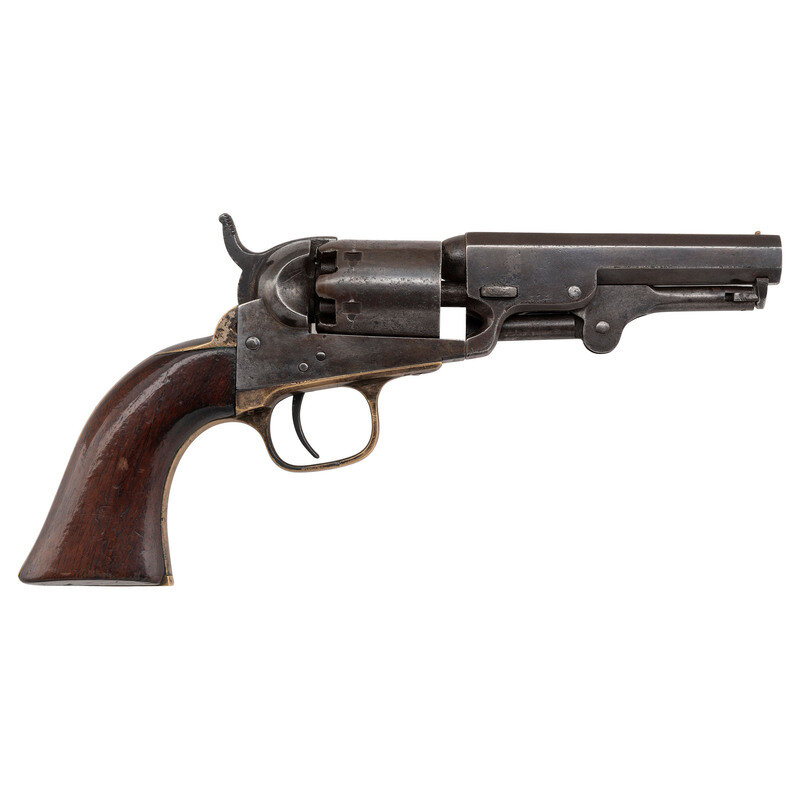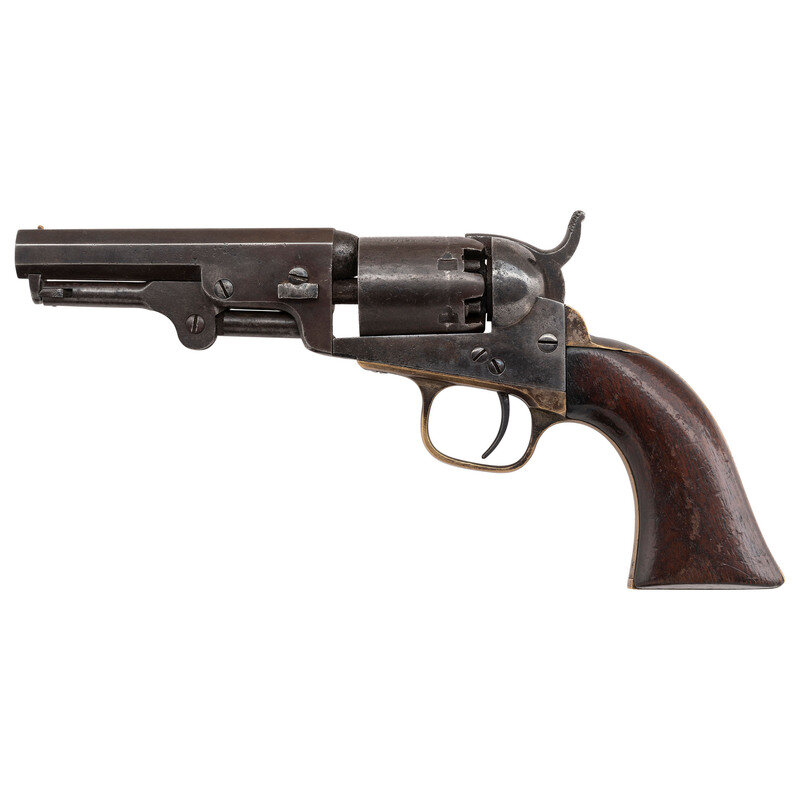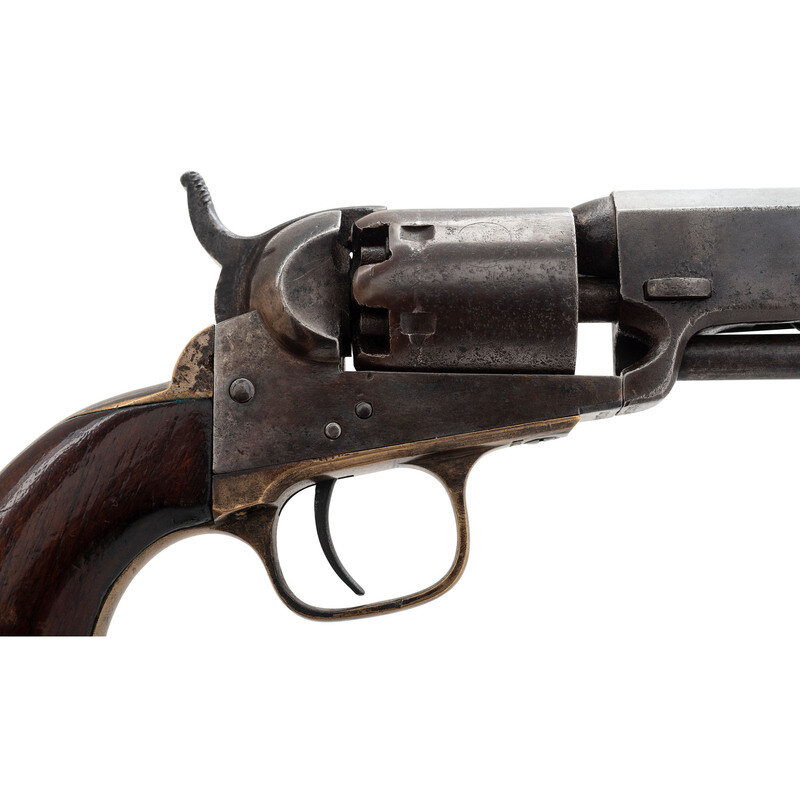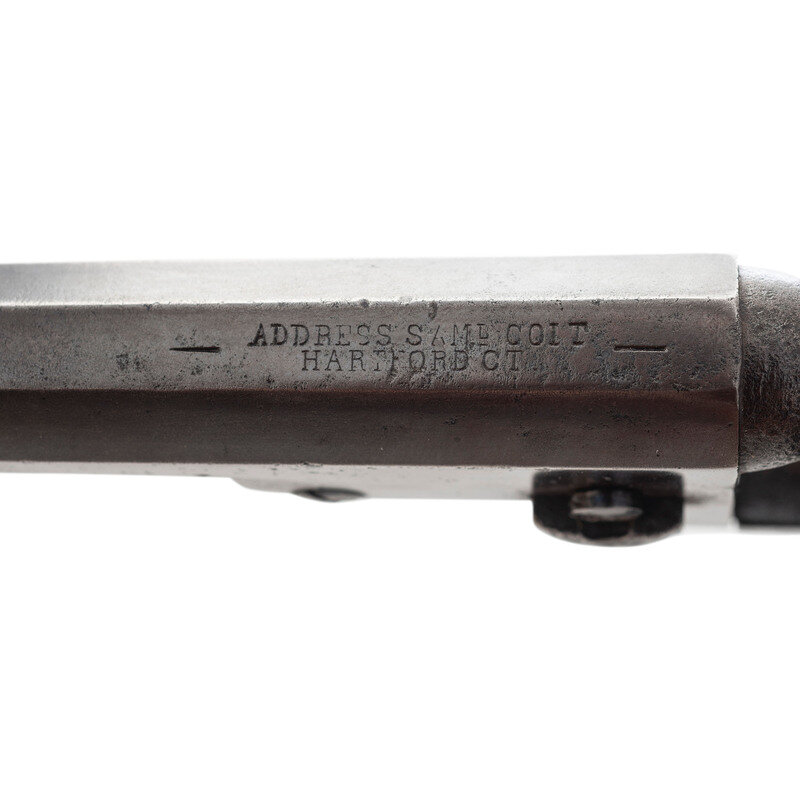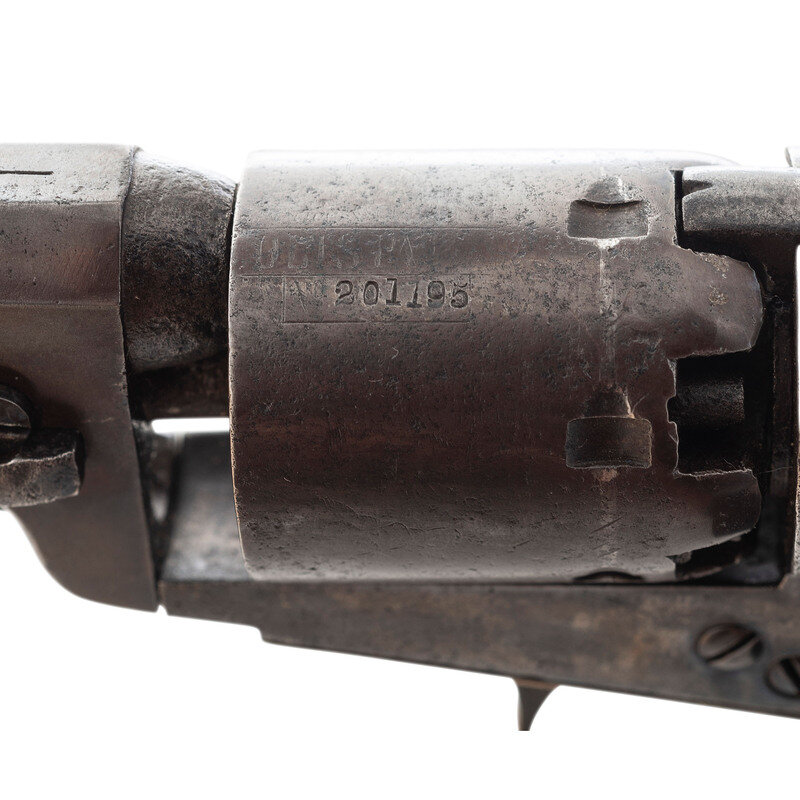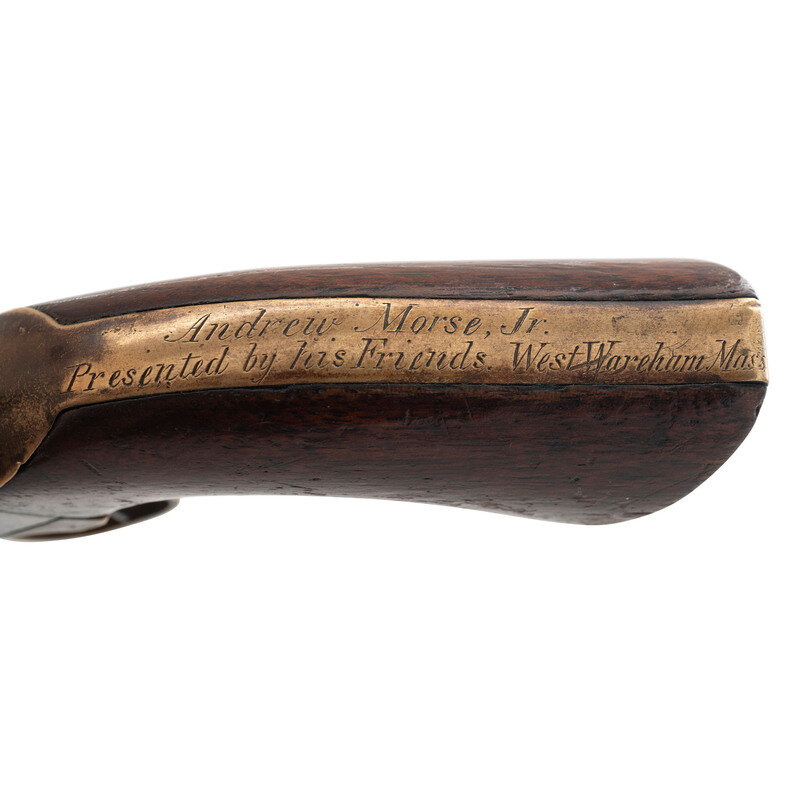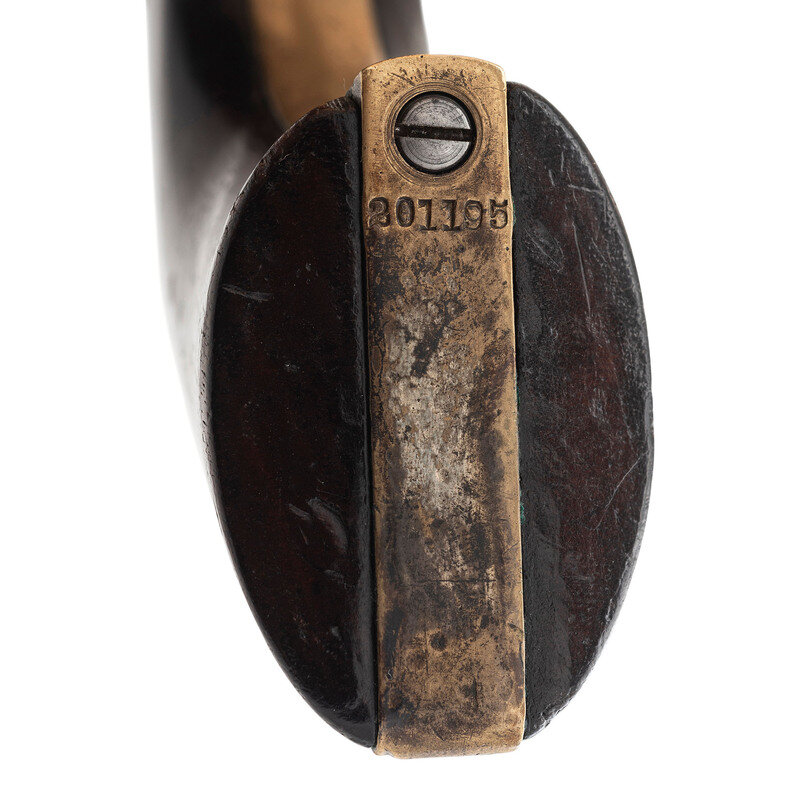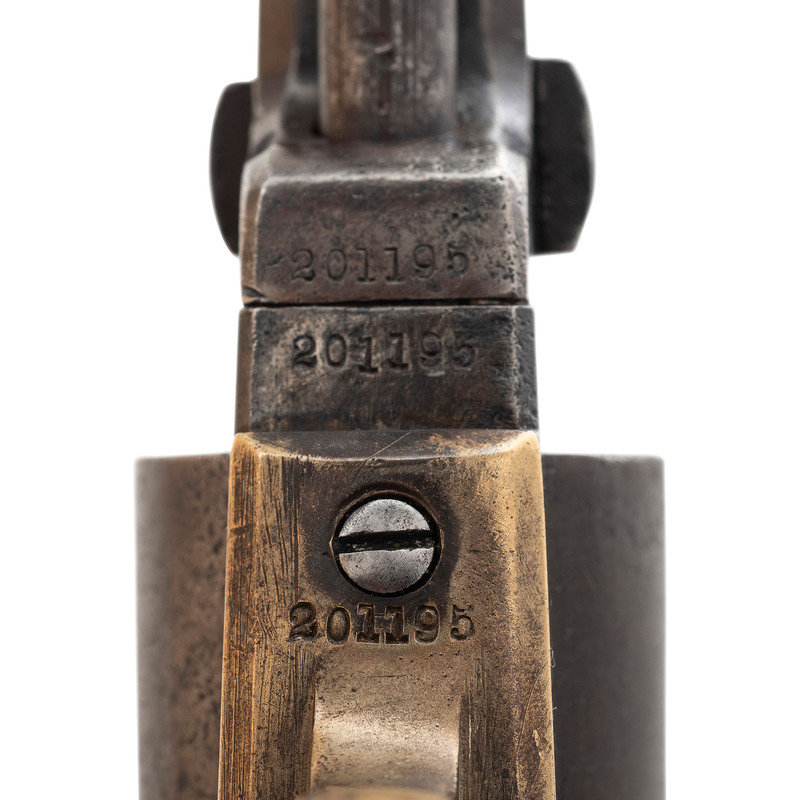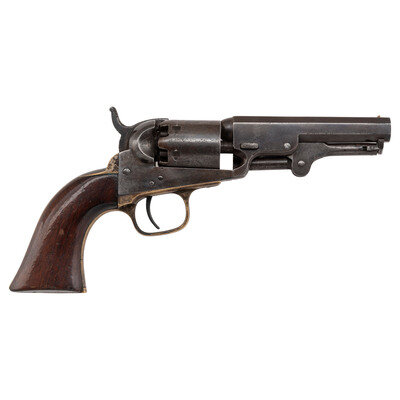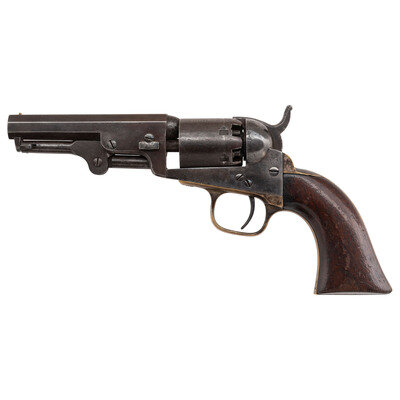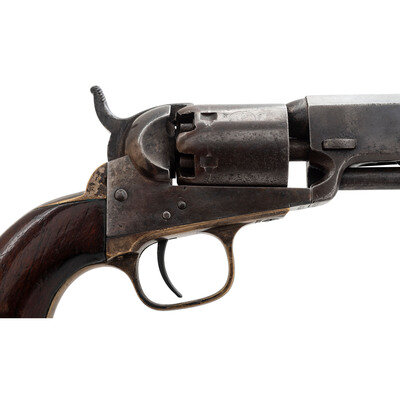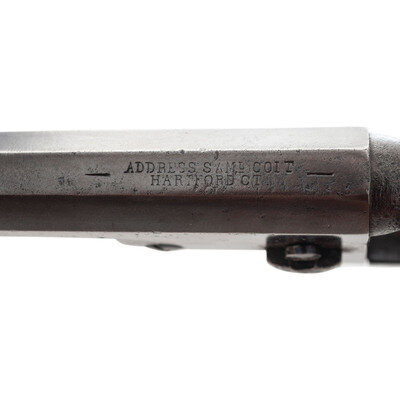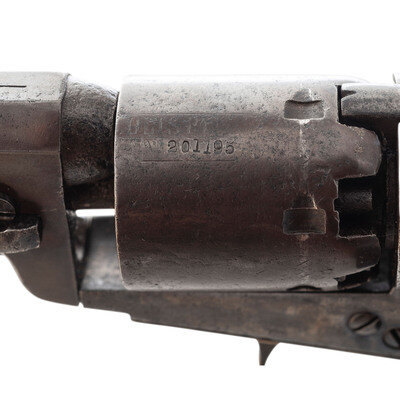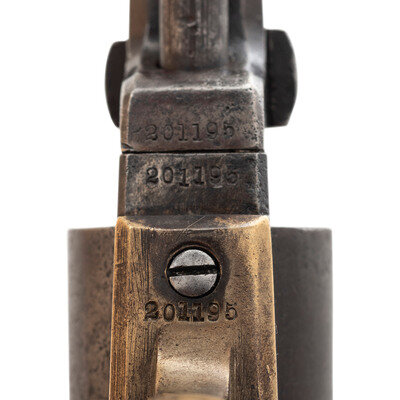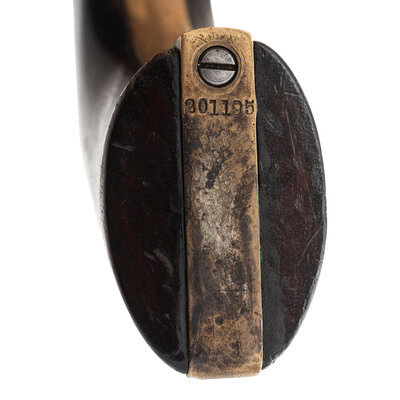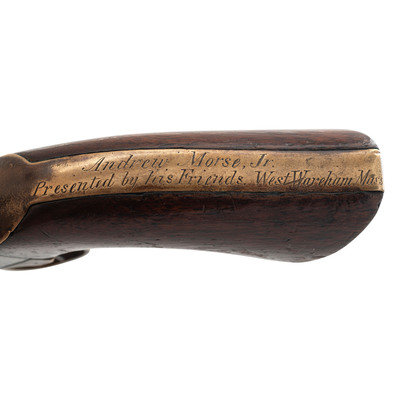Condition Report
Contact Information
Auction Specialist
Lot 16
Lot Description
.31 caliber. 4" octagonal barrel. SN: 201195 (mfg. ca.1862). Blued and color casehardened finish, silver plated brass backstrap and triggerguard, varnished one-piece walnut grip. Single action percussion revolver with six-chambered smooth round cylinder, hammer nose notch rear sight and brass post front sight. Barrel with two-line address that reads - ADDRESS SAML COLT / HARTFORD, CT - and lower left of frame with a barely visible two-line COLT'S/PATENT marking. Cylinder with weak traces of the Stagecoach Hold Up scene and marked COLT'S/PATENT and with the serial number. Matching serial numbers throughout, including the wedge and grip. Backstrap of revolver is engraved Andrew Morse, Jr/Presented by his Friends West Wareham, Mass. This revolver is published and discussed in the June 1983 issue of The Gun Report.
Andrew Morse Jr. of West Wareham, MA was 27 year old carpenter when he enlisted in the 90-day 3rd Massachusetts Rifles on April 19, 1861, 86 years to the day that the American Revolution began with skirmishing between Massachusetts Minute Men and British Regulars at Lexington Green and at Concord Bridge. He was officially mustered into Company D of that regiment on May 19 as a sergeant and was mustered out on August 3 in Boston. On November 15 he was mustered into "Read's Company" of the 3rd Massachusetts Cavalry as its first sergeant. On August 26, 1862 he was discharged for promotion and two days later was commissioned as a 1st lieutenant and mustered into C company of the 1st Louisiana Cavalry (US). On December 20, 1863 he was promoted to captain and took command of the company.
In early 1862 the regiment was transported to the Louisiana where it served as part of the Department of the Gulf. The regiment was initially stationed in New Orleans and in the summer of 1863 participated in the Port Hudson Campaign. The 1st Louisiana Cavalry (US) was formed in New Orleans from northern men and local Unionists. Like his preceding regiment, the 1st LA served as part the Department of the Gulf under General Nathaniel Banks. The regiment fought during the Port Hudson and Red River Campaigns and then participated in the Mobile Campaign, culminating with the captures of Spanish Fort and Fort Blakely. Morse was wounded in combat at Carrion Crow Bayou (Battle of Bayou Bourbeux or Battle of Boggy Creek) on 3 November 1863 near Grand Coteau, LA. He was wounded again at Sabine Cross Roads in Louisiana, in April of 1864.
Morse was mustered out of service on December 18, 1865 with his arm permanently disabled due to the Sabine Cross Roads wound. After the war Morse worked in a rolling mill in his hometown of Wareham and died in 1905. The revolver is accompanied by a large binder of research about Morse, and his service, copies of his service records and history of his service and a copy of the June 1983 Gun Report that the revolver is published in.
From the Collection of George Oldenbourg
